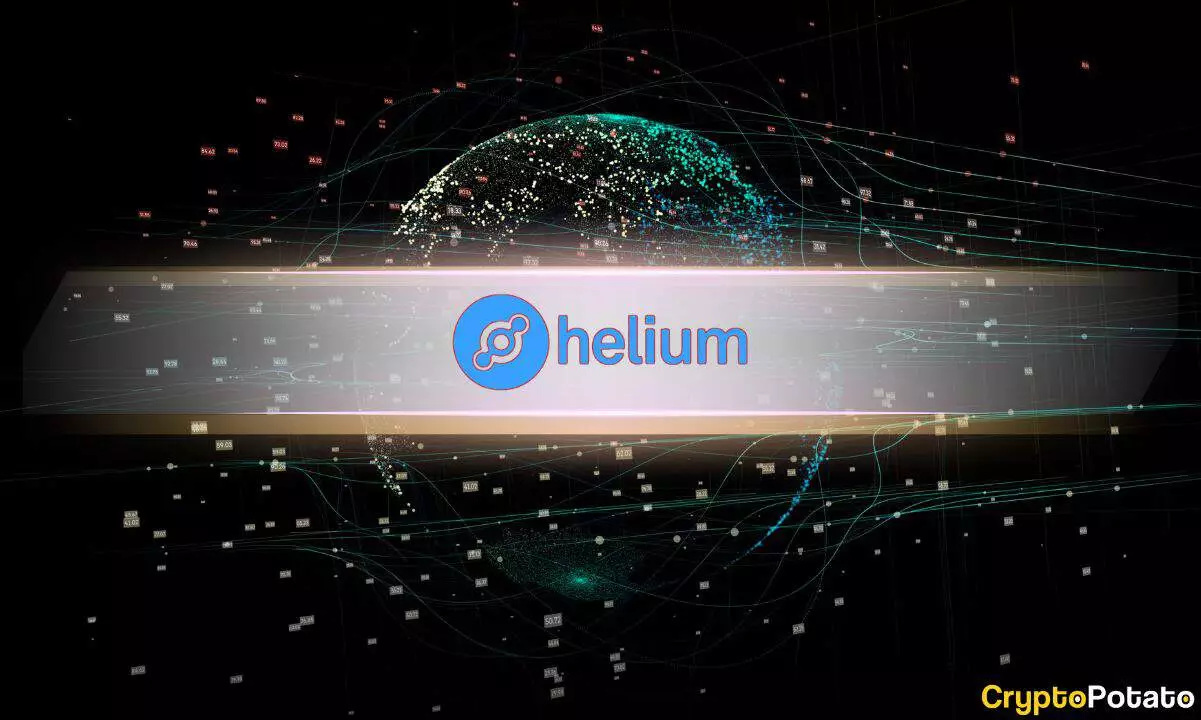The Helium Network, once heralded as a pioneering force in decentralized wireless communications, now finds itself grappling with stark realities. In the last quarter, its native token, HNT, witnessed a staggering quarter-over-quarter (QoQ) decline of 20%, resulting in a drop in market capitalization from $1.3 billion to $1.0 billion. This precipitous decline is distressing but not entirely unexpected, given the volatile nature of cryptocurrency markets. The price plummeted from $7.54 to a mere $5.88, raising alarms among investors and enthusiasts alike. Such losses highlight the precarious position of HNT and bring into question whether the foundational value proposition of Helium can withstand market pressures.
In an age where cryptocurrencies frequently fluctuate, HNT’s recent dip exemplifies the risks inherent in pursuing investments in this sector. While the market can be unpredictable, this decline signals something deeper within the Helium ecosystem, prompting necessary scrutiny over governance, transparency, and sustainability.
Expansion Amidst Adversity
Despite these troubling figures, the Helium network remarkably achieved a 14% growth in the number of hotspots, showcasing the team’s commitment to expanding their infrastructure. Hotspots now number 24,800, a promising increase despite HNT’s lackluster performance. Moreover, Helium Mobile’s plans remain significantly more affordable than traditional telecom offerings, reinforcing its value proposition. However, the introduction of new incentives, such as shifting from HNT rewards to Cloud Points, raises questions about the longevity of user enthusiasm amidst changing structures that could potentially alienate long-term advocates.
This determination to grow may seem admirable, yet the shift in incentives is alarming. By intertwining the fate of HNT with Cloud Points, the organization risks disillusioning its base. Users and investors might perceive this adjustment as a desperate attempt to bolster token performance rather than a genuine commitment to community engagement and utility.
Resilience in Crisis: A Double-Edged Sword
Helium’s response to Hurricane Helene in North Carolina serves as a testament to its resilience. While many conventional networks faltered, Helium’s hotspots maintained operational effectiveness, proving vital in emergency situations. The provision of 5G coverage during crises not only accentuates the network’s practical utility but also grants it a narrative of success amid chaos. However, we must ask: Is this merely a band-aid solution, or is Helium genuinely prepared for sustained utility when the markets stabilize?
Although the notion of providing emergency kits, including Starlink devices, is commendable, how much of this effort is genuine altruism versus a strategic move to salvage public perception? Without a clear picture of the underlying motivations, one cannot help but wonder if Helium is simply papering over its larger issues in the face of significant market pressure.
The Discrepancies of Supply and Demand
Despite Helium’s ambitious growth in infrastructure, expectations for demand remain disproportionate to supply. With over 375,000 hotspots on board, the anticipation for a booming usage of Data Credits (DCs) has proven misguided. Despite the considerable onboarding costs—such as the $10 fee to register a hotspot—daily DC burns remain disappointingly low, leading to a disconnect that could spell trouble for sustainability. Helium may have built an impressive network, but without corresponding demand, its future looks increasingly grim.
Moreover, the troubling allegations surrounding insiders hoarding HNT tokens raise ethical concerns about community engagement and transparency. The discrepancy between what insiders accumulate and the meager remnants left for the public suggests a system rigged against the average investor, potentially damaging the perception of Helium further. If the community’s trust disintegrates under these suspicions, the network could face a dire future.
The Leadership’s Response to Criticisms
With a history of controversial partnerships—including claims of collaboration with significant companies like Lime and Salesforce—Helium has faced backlash each time these assertions have been debunked. Their removal of company logos and references to partnerships that never materialized highlights not only a crisis of credibility but also a lapse in corporate governance. Transparent communication and a willingness to acknowledge missteps are essential to regaining trust, yet these incidents paint a disconcerting picture.
Helium stands at a crossroads, and while there are glimmers of growth and utility amidst a backdrop of decline, the network must reassess its priorities and strategies. The precarious balance between ambitious development and community trust will be critical if Helium hopes to navigate the challenging waters ahead.

